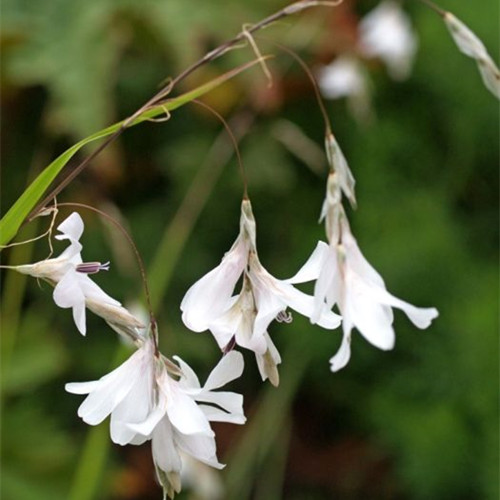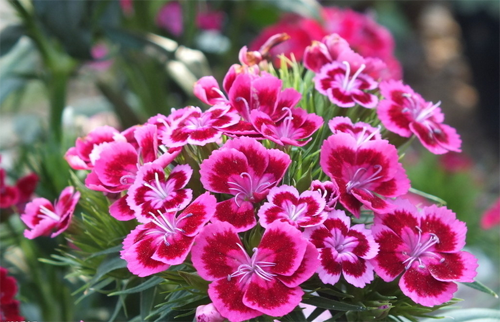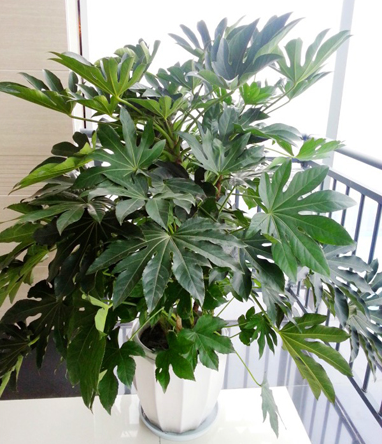What is the angel fishing method?
Angel fishing flowers are very good-looking and look a little strange. how to raise this kind of flowers? What does it look like?

Angel fishing flower, Iridaceae, native to South Africa.
Angel fishing flowers mature plants like the sun like warmth, suitable for planting in well-drained sandy soil, such as in a stream or artificial river side to serve as a set is exactly the name of the angel fishing rod, looks like a fishing rod is hanging into the river, the angels are competing fishing.
Angel fishing flower is a perennial herb, which can propagate in spring and autumn.
Angel fishing flower planting method: take a clean container with a lid and insert a piece of cosmetic cotton pad (the reason for using cosmetic cotton rather than napkins is that the budding period is longer and napkins are easy to be soaked). Put the covered container and cosmetic cotton into a basin with a lot of carbendazim sterilization solution for disinfection, take it out about half an hour later, rinse inside and outside the covered container with boiling water, and finally inject about two centimeters of boiled water into the container. After waiting for cooling, you can put the seeds of the angel fishing rod, close the lid, refrigerate for about four to five weeks in a layer with a temperature of-4 °~ 4 °in the refrigerator, and then sow at room temperature. The suitable temperature for sowing is 18 °25 degrees. The strict disinfection in the early stage is to prevent the seeds from getting moldy when they are refrigerated and germinated.
Angel fishing flower planting and sowing method is introduced here, quickly raise one in your own home.
Planting and maintenance methods of Zaili Flower
Zelihua prefers a warm, wet, sunny climate and grows well in slightly alkaline soil. Not resistant to cold, the aboveground parts gradually withered after winter, overwintering with rhizomes in the soil. Propagate by rhizome. So how to plant and maintain the flowers? Next, the editor will introduce to you.
First, a brief introduction to Zili Hua
ThaliadealbataLink (scientific name: Zailihua): family Taro, which belongs to perennial water herbs. Leaves ovate-lanceolate, grayish blue, margin purple, 50 cm long and 25 cm wide. Compound raceme with small, pansy flowers. The whole plant is covered with white powder. The flower stalk can be more than 2 meters high, and the slender flower stem can be as high as 3 meters. Purple flowers bloom at the end of the stem, like bait tied to a fishing rod, with a very special shape.
Zelihua, which is native to the tropical regions of the southern United States and Mexico, is an excellent greenhouse flower with a stalk of more than 2 meters. It is a kind of tall water flower with high ornamental value introduced into China.
Second, the planting method of Zili flower.
Tropical plant native to the southern United States and Mexico. Also known as Talia, is a perennial water plant of the genus Talia. The height of the plant is about 2 meters. Leaves ovate-lanceolate, grayish blue, margin purple, 50 cm long and 25 cm wide. Compound raceme with small, pansy flowers. The whole plant is covered with white powder.
Zelihua prefers a warm, wet, sunny climate and grows well in slightly alkaline soil. Not resistant to cold, the aboveground parts gradually withered after winter, overwintering with rhizomes in the soil. Propagate by rhizome.
The plant of Zili flower is tall and straight and beautiful, and the flower, leaf and stem all have ornamental value. Can be planted in the pond waterscape, with water lilies and other floating-leaf plants planted to form a magnificent landscape. Several plants can also be embellished in the rocks, barges, or potted plants are placed in the doorway, indoor and other places to enjoy.
The above is the planting method of Zili flower introduced by the succulent flower bed. I hope it will be helpful to you. You are welcome to continue to pay attention to the succulent flower bed and learn more about the planting and maintenance of aquatic flowers.
Simple planting method of family orchid [picture and text] simple planting method of family orchid-mossy planting orchid [picture and text] 2013-09-30 Classification: orchid planting
Orchid is a very elegant indoor ornamental plant, especially the charming fragrance of the national orchid (Chunlan, Jianlan, Chunjian, Huilan and other places) when it blossoms, which has always been respected by the ancients and is afraid of sun exposure. It is also a typical indoor green plant. The orchid culture, which has been formed for thousands of years, has influenced the aesthetic concept of flower appreciation in some surrounding countries (such as Japan, South Korea, etc.). In the past ten years, with the gradual improvement of living standards and the improvement of indoor living environment in our country, people's demand for appreciation of the indoor furnishings of the national orchid has been greatly increased, but when it comes to orchids, everyone thinks that it is very difficult to feed them. Therefore, the problem of orchids being difficult to raise has hindered orchids from further entering more families. Is it really difficult to raise orchids (I mean national orchids, the same below)? According to my personal experience, orchids are the easiest to cultivate among all plants. They mainly master root ventilation, ensure moisture, and grow in a certain degree of light.
I would like to introduce a very simple method to ensure that your orchid survival rate is 100%, and the management (mainly watering management) is relatively casual, which is very suitable for indoor families (large-scale orchid farm is not effective). To raise orchids, the choice of plant material is the most critical, you choose plant materials at the same time also doomed whether the orchid seedling will survive in the future. Because the main growth elements of orchids are air permeability, water conservation, nutrition and proper light. Air permeability and water conservation are the most difficult techniques for orchids to master. Orchids are fleshy roots and need good air permeability, and water is a necessary condition for all plants to grow. However, there is a contradiction between the two. More water will squeeze the air out of the plant material, so that the root can not breathe and die. It is even more difficult to do without water, and any plant will die, so it is very important to find a plant that is both breathable and water-retaining, and the amount of water and the interval of watering have no great effect on the orchid. Generally speaking, as long as the plant material has a good grasp of the amount and interval of watering, orchids can grow very well, but there are four seasons in a year, and the country has north and south, and the change of temperature makes it difficult to grasp the amount and interval of watering. As a result, many people's orchids either drown or die of thirst, of course, more drown than die of thirst. Therefore, the good plant materials are those with more and less water, longer watering time and shorter watering time have little effect on orchids. I introduce a kind of plant material that has this characteristic, that is, moss (water moss, moss, etc.), see figure:
This is a downhill lotus petal orchid that has been planted with moss for 3 months. from the leaves, the growth is still very normal. Now how about the roots? Lift the moss off the surface, as shown in the picture:
The root grows well and the new root sprouts very well. Take a look at the lower part of the root.
The following roots are also growing well, how, this method is quite good! Water moss is a kind of bryophyte, which belongs to the bryophyte family, also known as peat moss. It can be divided into thick-leaf peat moss and fine-leaf peat moss, which generally grows in tropical and subtropical wetlands or marshes in mountainous areas with an altitude of 800 meters above sea level. The length is generally about 8cm-30cm. Its PH value is generally between 5 and 6, the water moss is very soft and highly absorbent, the amount of water absorbed is equal to 20 times of its own weight, and it has very good special functions such as water retention, fertilizer conservation, ventilation and so on. Therefore, water moss can create good cultivation conditions for indoor flowers and plants, and it is widely used in all kinds of orchid cultivation, and it is the main plant material for planting Cymbidium. Taiwan is an important producing area of Cymbidium in the world, and a large amount of water moss is imported from foreign countries every year as a plant material for planting Cymbidium. Because the water moss has the characteristics of excellent air permeability and strong water retention, it is good in principle to use it to grow national orchid. To this end, I use water moss actual cultivation, there are more than a dozen pots of orchids, has been almost 2 years, the effect is very satisfactory. Please look at the example: this is a pot of golden ponytail (Jianlan)
It is very convenient to take up the basin. You can check the growth of the root at any time. Take a look at the root from the pot
The following is a pot of Jian Lan Da he Su to look at the root:
It's pretty good, right? let's take a look at the newly planted Chunlan:
Root condition: the following is Dendrobium planted with moss, growing very well
The main advantages of using moss as plant material are as follows: 1. Plant materials are relatively easy to obtain, if there is a local, can be collected locally, if not, you can go to the market or online purchase, the price is not expensive, as an orchid plant, there is little difference in quality, as long as it is natural, there is no artificial dyeing on the line. two。 Planting in the pot is very simple, prepare a suitable flowerpot, put some foam blocks on the bottom of the pot to increase air permeability, then wrap the root loosely with water moss, put it into the flowerpot, and then cover the pot surface with water moss, and complete the planting process when it feels beautiful and appropriate. 3. Watering management is very casual, after planting can be watered, can be watered every day, can also be watered once a week, how much water can be irrigated, excess water will flow out by itself, will not accumulate water, it is easier to grasp. 4. Clean, neat and light, if you buy a relatively pure water moss with almost no soil, wash it with water before you use it, it will be very clean, it will not bring out the soil from the basin because of watering, and the pot of good orchids is very light and can be held and placed at will. 5. The pot surface water moss can be opened at any time to check the root growth, which is beneficial to observation. 6. If you water more frequently and have a high degree of wetness, the fresh water moss laid in the basin can generally survive, and the green water moss against the tall and straight orchids will add a lot of color to this pot of orchids. The light and fertilization are the same as orchids planted with other plants, but it is best to use compound fertilizers, which are clean, convenient, and will not produce odors and pollute the environment. The compound fertilizer with 15% nitrogen, phosphorus and potassium content is 1/1000 mixed with water once a month, or you can lift the water moss on the basin surface, scatter an appropriate amount (no more than 1 gram) of compound fertilizer particles near the root, then cover it with water moss, water it and slowly dissolve and absorb it.
Special point: because the water moss is very loose, the gap is large, and for a long time, the water moss in the lower part of the basin will decompose, and the lower orchid root has no attachment, which will affect the absorption of nutrients by the lower root, and the basin surface will collapse (you can feel it by gently pressing the basin surface water moss with your hand). Therefore, half a year later, you need to add the water moss at the root below, which is very convenient, hold the basin surface with the palm (the orchid seedling clamps properly between the fingers), turn the basin upside down, hold the outside of the orchid basin with the other hand, and gently try to pull it out. I feel that the plant material and the basin are loose and put the orchid basin. Gently lift, the whole plant material will be completely out of the basin. Check the root, fill the large gap in the lower part of the root with fresh water moss (how much), and then put it back into the basin according to the original position, almost without any effect on the root. You can immediately carry out normal placement and management (note: do not destroy the integrity of the formation of water moss and root in the operation). It is very complicated to say and easy to operate. If the necessary things are ready, it takes about 2 minutes for water moss to plant orchids, which is really done in 2 minutes. Is there any emotion after reading the post? Let's get moving! I don't know whether the whole introduction is comprehensive or not. if you have any questions, you can leave a message and discuss together. The process of raising orchids is more interesting than appreciating orchids. Fishing should feel much better than eating fish!
- Prev

The propagation method of carnation flower what is the flower language?
Carnation is very good-looking, many people like to raise, want to raise a few more at home, how can this do? What is the breeding method of carnation flower? What is the flower language of Carnation? Sowing and propagation, the optimum temperature for seed germination is 21 to 22 ℃, which is usually carried out in September. Sow seeds in the open field seedbed
- Next

The culture methods and matters needing attention of star anise gold plate how to do with leaf drooping?
Star anise gold plate is a very famous wealth tree. If such a kind of wealth tree is planted, it is the rhythm of making money from all directions. How can star anise gold plate be cultivated well? What are the precautions in the process of appearance? What if the leaves droop in the course of breeding?
Related
- Fuxing push coffee new agricultural production and marketing class: lack of small-scale processing plants
- Jujube rice field leisure farm deep ploughing Yilan for five years to create a space for organic food and play
- Nongyu Farm-A trial of organic papaya for brave women with advanced technology
- Four points for attention in the prevention and control of diseases and insect pests of edible fungi
- How to add nutrient solution to Edible Fungi
- Is there any good way to control edible fungus mites?
- Open Inoculation Technology of Edible Fungi
- Is there any clever way to use fertilizer for edible fungus in winter?
- What agents are used to kill the pathogens of edible fungi in the mushroom shed?
- Rapid drying of Edible Fungi

